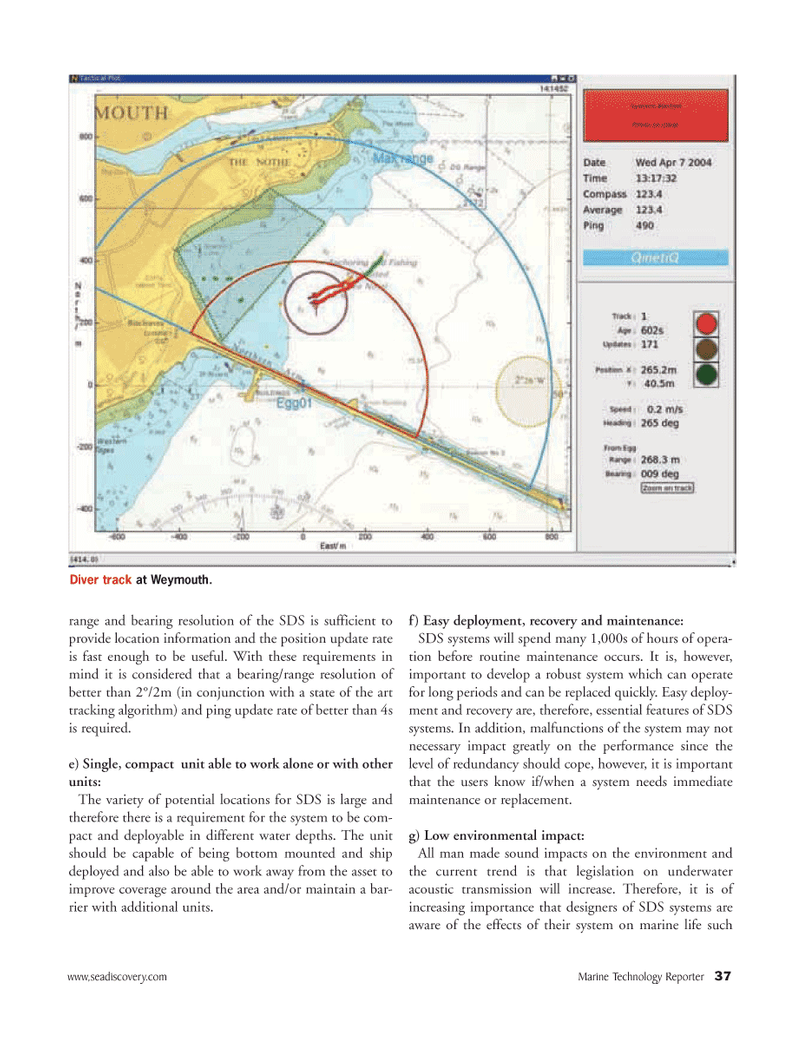
Page 37: of Marine Technology Magazine (November 2006)
Deep Ocean Exploration
Read this page in Pdf, Flash or Html5 edition of November 2006 Marine Technology Magazine
www,seadiscovery.com Marine Technology Reporter 37 range and bearing resolution of the SDS is sufficient to provide location information and the position update rate is fast enough to be useful. With these requirements in mind it is considered that a bearing/range resolution of better than 2°/2m (in conjunction with a state of the art tracking algorithm) and ping update rate of better than 4s is required. e) Single, compact unit able to work alone or with other units:
The variety of potential locations for SDS is large and therefore there is a requirement for the system to be com- pact and deployable in different water depths. The unit should be capable of being bottom mounted and ship deployed and also be able to work away from the asset to improve coverage around the area and/or maintain a bar- rier with additional units. f) Easy deployment, recovery and maintenance:
SDS systems will spend many 1,000s of hours of opera- tion before routine maintenance occurs. It is, however, important to develop a robust system which can operate for long periods and can be replaced quickly. Easy deploy- ment and recovery are, therefore, essential features of SDS systems. In addition, malfunctions of the system may not necessary impact greatly on the performance since the level of redundancy should cope, however, it is important that the users know if/when a system needs immediate maintenance or replacement. g) Low environmental impact:
All man made sound impacts on the environment and the current trend is that legislation on underwater acoustic transmission will increase. Therefore, it is of increasing importance that designers of SDS systems are aware of the effects of their system on marine life such
Diver track at Weymouth.
MTR#9 (33-48).qxd 11/13/2006 4:36 PM Page 37

 36
36

 38
38
